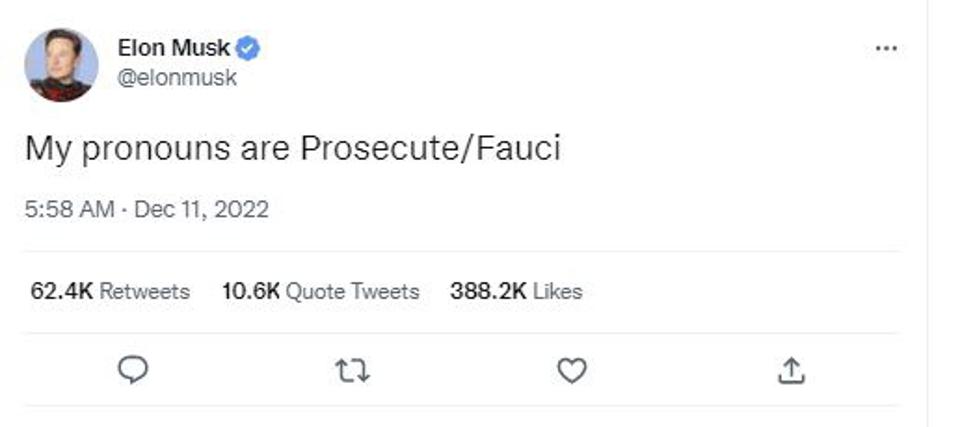Is the USA in a Flight 93 situation?
United Airlines flight 93 was the one that crashed into a field in Pennsylvania on 9/11/01, instead of being flown into the US Capitol. The reason it crashed into a field in Pennsylvania was that a group of passengers, ordinary peace-loving Americans, put aside their fears of immediate harm from the edged weapons held by the hijackers and united with one goal: to storm the cockpit, kill the hijackers, and regain control of the plane. Although they didn’t succeed in regaining control of the plane, they did at least induce the hijackers to crash it prematurely.
These passengers had the advantage of knowing, from communications with people on the ground, what was up that morning—and thus, what their hijackers probably intended to do with the plane. So really they knew they had nothing to lose. Among the many sounds the cockpit voice-recorder picked up in the final minutes of the flight, was that of a food cart being rammed against the cockpit door, and a cry from one of the passengers, “In the cockpit! If we don’t, we’ll die!”
According to Wikipedia, “Vice President Dick Cheney, in the Presidential Emergency Operations Center deep under the White House, authorized Flight 93 to be shot down, but upon learning of the crash, is reported to have said, ‘I think an act of heroism just took place on that plane.’”
He was right. But the heroism of the flight 93 passengers was a different kind of heroism than the lone-actor heroism we’re more used to reading about. It was a heroism involving a coming-together, a coalescence, of people who could accomplish a heroic task only when in a “united state.”
The rarity of that kind of coalescence nowadays points to a basic conundrum of human affairs, especially governance. In other words, even when a large mass of people has ample justification for rebelling against the relatively small group of individuals who control their lives, and ample means to do so—if united—they almost never unite effectively.
*
Consider the recent unprecedented popular protests across China, which ultimately involved more than a dozen cities. The background was a general unhappiness concerning national and local “COVID zero” policies, plus an even more general dissatisfaction with one-party rule. The triggers for protests were World Cup broadcasts from Qatar showing fans not wearing masks, and a deadly fire in a residential building in Urumqi that took firefighters hours to extinguish due to extreme local anti-COVID measures—Urumqi had been locked down for months. As for the leadership of the protest movement . . . the movement seems to have been relatively leaderless and spontaneous, driven chiefly by the circulation of Internet messages and images. That leaderlessness is unsurprising in China, where any dissident leader visible and vocal enough to shape and direct protests is likely to be swiftly bundled away by police. It also may have been the decisive factor, for these relatively leaderless protests were limited to public gatherings, and did not have clear goals other than the mass voicing of complaints. Ultimately, the Chinese government was able to climb down from their COVID policies without their tight control of the country being threatened significantly.
A popular uprising against the government of Sri Lanka earlier this year was arguably more successful. The government, headed by President Gotabaya Rajapaksa and including some of his family members, was widely viewed as incompetent and corrupt, as Sri Lankans faced out-of-control inflation, power shortages, and other problems. When these stresses worsened and protests began, the government responded with repressive measures such as arrests and social media blackouts, exacerbating the situation. The protest movement eventually developed a leadership structure, including some firebrand student leaders. In July, a very large crowd of protesters stormed the Presidential palace in Colombo and Rajapaksa was forced to flee the country. However, the new government soon cracked down on the protest movement leaders, who apparently didn’t have much support among the country’s elites.
There are also ongoing protest movements in Iran and Russia. The one in Iran is very prominent and broad-based, and has forced the Tehran regime to backpedal somewhat, but so far has failed to result in an overthrow of the theocratic regime—which recently has started publicly executing protesters. The protest movement in Russia, against the Putin government and its Ukraine invasion, is hardly visible and seems to have achieved little if anything—clearly many dissidents have opted to leave the country rather than stay and protest, while some higher-profile dissidents have been disposed of via the now-classic Russian method of defenestration.
Just looking at these examples, one can postulate that a popular political uprising, to have a decent chance of success, requires:
-
- Sufficient popularity, i.e., support from a large, preferably dominant proportion of the population, among whom there is a strong commonality of interest;
- Strong stressors/triggers that convince ordinary people that regime change is needed and compel them to take action (starting with protest marches and other gatherings);
- A vision of how things should be different, e.g., more liberal, less corrupt, more aligned with some alternative ideology, etc.
- Effective leaders who can inspire and direct the movement in ways that achieve regime change;
- Elite support, boosting the movement’s power by enabling it to control or influence key institutions (e.g., media, academia, police, military).
*
Ticking most or all these boxes is going to be challenging anywhere, particularly so in Western countries. I would say it’s virtually impossible in the United States at present.
Popularity: Considering how the current US regime favors nonwhites, and considering how many contemporary white women are content with this anti-in-group discrimination, it seems likely that American dissidents are mostly white males—the principal heirs, as it were, of the country’s founders and builders. I would guess that this putative dissident group, all in all, comprises less than a third of the US population. That is still a very large number of individuals, somewhere between 50 and 100 million. Certainly they would be unbeatable if united as one against disunited foes. But even white American males remain highly disunited. Moreover, the fact that dissident Americans, as I have defined them, are very much a minority puts them in a weak position culturally. It also would be used (and to some extent is already being used) to justify harsh regime measures against them, since they do not “represent the average American.”
Stressors/triggers: The level of stress and urgency that would normally compel dissidents to go out onto the streets and protest is so far not very evident among dissident Americans. To be sure, the regime (an entity that is cultural as well as political and extends far beyond formal government) has done great damage to the country, via the wokeification/corruption of education, media, academia, immigration policy, the judiciary, and most other policies and institutions. Their misrule seems much more deserving of a punitive popular reaction than the misrule that prompted the American Revolution. Yet the US, for now, retains relatively high living standards, certainly for white males—and those living standards are supported by a huge structure of financialization/debt. In short, American dissidents still have much to lose by revolting openly. And so, like the proverbial slow-boiled frog, they still mostly prefer waiting (and complaining ineffectually, often indirectly via conspiracy theories) to real, in-the-streets action. I doubt that they will prefer action until there is much more radical and extensive regime provocation and/or a prolonged economic depression that leaves them with “nothing to lose.”
Envisioned change: American dissidents are remarkably fragmented in their views of what has gone wrong and what is to be done about it. Many of them, as I just noted, believe in bizarre conspiracies involving things like elite pedophile rings, or “chemtrails.” It’s often hard to tell where the conspiracy-theory fringe ends and the mainstream begins.

The only halfway-cogent explanations for USA’s predicament that I’ve ever heard/read are from right wing intellectuals with small followings. The average “angry white male” appears to have little or no understanding of, say, the recent cultural and political impact of women, or the history of blacks in the USA and their manipulation by the major political parties. The most popular view now among right-wing American dissidents seems to be that “wokeism is the problem,” and that things would get better if it could just be toned down a bit. In other words, they have neither a solid grasp of the problems facing the country, nor a positive alternative vision—let alone one that captures the energy and idealism of young people in the way that progressivism/wokeism does.
Inadequate leadership. The American woke regime seems almost as effective at suppressing the leaders of dissident groups (e.g., Proud Boys, Oath Keepers) as the Chinese Communist party’s secret police are at suppressing pro-democracy leaders. In the wake of the regime’s 1/6/21 prosecutions and hearings, I can’t think of a single person, inside or outside of American politics, who currently has the visibility, stature, energy, intellect, and vision to reverse the adverse trends and put the country on secure footings. A big part of the problem, of course, is that at this late stage of the national disease, saving the country almost certainly would require a revolution-like abandonment, at least temporarily, of its current political framework—and the regime, understanding this, has begun to treat any opposition as sedition. Given these stakes, many of the right’s most prominent “leaders” have switched to less risky goals, such as enriching themselves—which to me is a clear indicator of organizational defeat/degeneracy, seen also among Democratic Party-controlled African American leaders.

Lack of elite support. Perhaps the most obvious of all its defects is that the American conservative/dissident movement lacks elite and institutional support. This is not a trend that seems likely to be reversed any time soon. The takeovers/makeovers of elites and institutions by anticonservative activists and their ideas (often these begin as conquests by women, who are inherently more left-wing and susceptible to wokeism) reflect a process that has been at work for decades, and is now accelerating through its final stages to a state of more or less complete control.
Thus, while the Flight 93 story presents a striking case of group heroism in the face of disaster, it’s more an example of what US isn’t (yet) than what it is. The legacy population of the United States, though well advanced in their cultural and political emasculation, and in the related, sad handover of their inheritance to foreigners, are still surprisingly comfortable, still quite far from an “if we don’t, we’ll die” moment.
***

